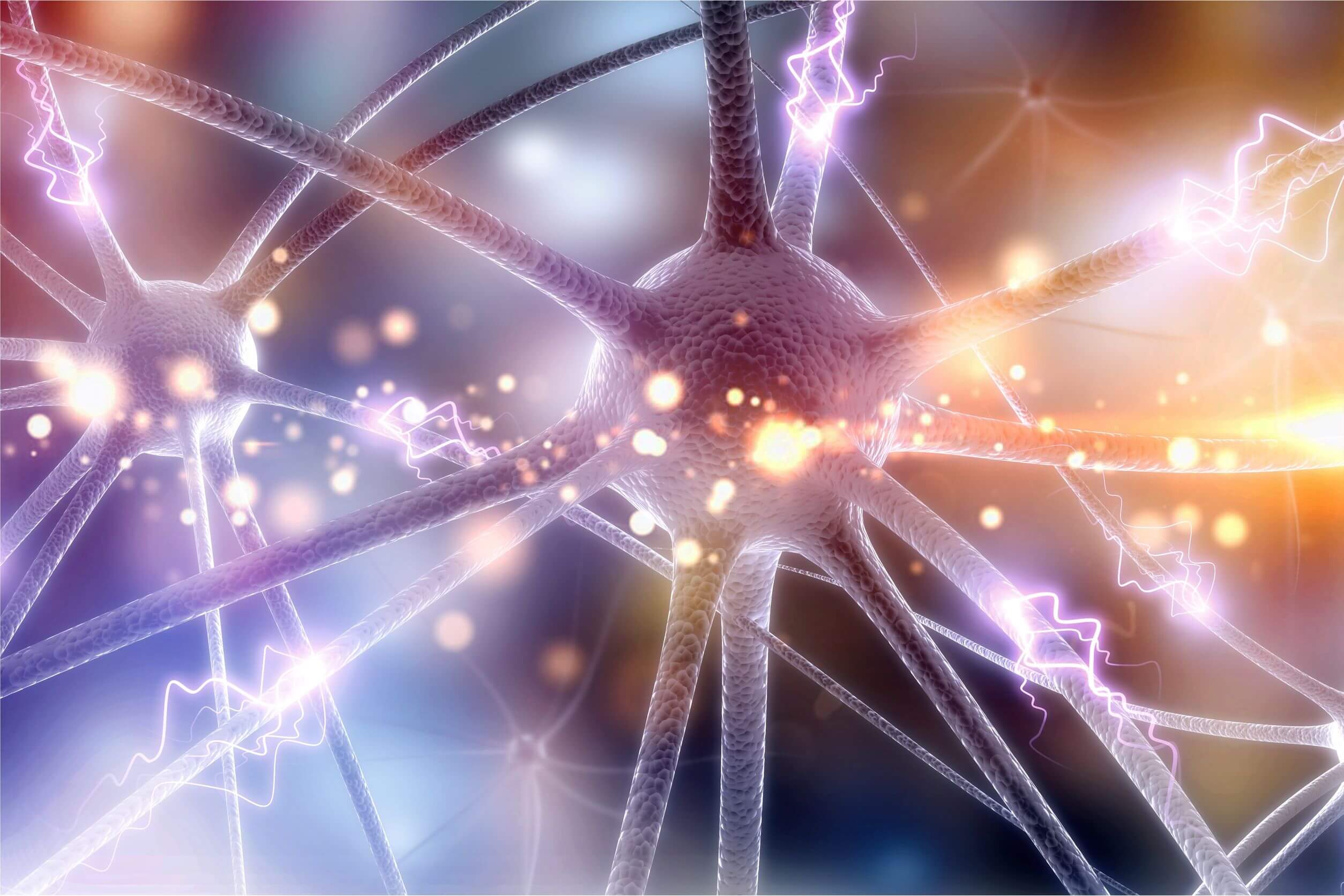What Is Parosmia?

Smell is essential for human beings. It allows you to enjoy the pleasant smells around you and is closely related to taste. Any change in this sense, no matter how small, has a negative influence on the life of the person who suffers from it. Would you like to know what parosmia is and why it appears? Keep reading!
We sense smells because our brains interpret the action of chemical substances on the olfactory system. The central nervous system (CNS) is so used to this type of stimulus that it’s able to identify its source and its qualities. In this way, it offers information about things that surround us, thus playing a fundamental role in health.
Smell disorders are very common pathologies in older adults. In fact, it’s estimated that they have a prevalence of up to 50% in people over 65 years of age. Many of these alterations are associated with neurological pathologies. However, they can also appear after severe respiratory infections.
What is parosmia?

Parosmia is a qualitative change in our sense of smell in which an existing smell in our vicinity is perceived differently than usual. It can even be the case that previously pleasant smells can become unpleasant. It’s important to make the distinction from phantosmia, in which an unpleasant odor is perceived in the total absence of an olfactory stimulus.
There are certain physiological conditions that can lead to the erroneous interpretation of an aroma, such as hunger, satiety, or our sexual condition. However, in most cases, parosmia is a clinical manifestation of some underlying pathology. When the change is accompanied by behavioral disorders, it can cause anorexia and other problems.
People whose sense of smell is affected also experience problems in other areas of their lives. This is because it can also affect their sense of taste. In this sense, it’s possible for food to suddenly start to taste bad.
What are the possible causes?
The causes of qualitative olfactory dysfunction are currently not entirely clear. Some studies establish that they may be related to alterations in the structures surrounding the olfactory system. Other hypotheses suggest that parosmia may also be due to dysfunctions in the neurons of the olfactory system itself.
The theories about why this qualitative alteration appears are many; some even think that it can occur due to a kind of short circuit in the olfactory system. However, we can also say that parosmia appears as a result of different conditions in the respiratory tract and the CNS, such as the following :
- Sinusitis
- Flu or common cold
- Psychotic conditions
- Intracranial tumors
- Epilepsy
- Schizophrenia
- Dyspepsia
A recent discovery links parosmia with COVID-19 infection, and is one of the symptoms that can occur. In fact, a study carried out in 2020 established that up to 32.4% of patients had this symptom. In addition, it is also known as one of the most persistent sequelae of the disease.
Some risk factors
In addition to this, changes in smell can occur in some people in whom there’s no underlying pathology that could explain their appearance. In this sense, multiple risk factors have been established that can predispose people to suffer from this condition.
- Aging
- Smoking
- Head injuries
- Masses in the nasal cavity
- Exposure to certain chemicals and medications
- Radiation treatment for head and neck cancer
- Hormonal alterations
Diagnosis of parosmia

The diagnosis of parosmia and any other small alteration can be very difficult as they are subjective manifestations. In this sense, questioning by the doctor acquires great importance, and they will need to inquire about personal or family situations or history that may explain the presence of the disease.
Through questioning, the onset of symptoms, intensity, duration and the presence or absence of associated symptoms must also be determined. If parosmia is associated with headaches or behavioral disturbances, then nervous system problems should be considered, otherwise, it will be associated with respiratory pathologies.
The physical examination acquires great importance. First of all, the state of the nostrils must be observed, with special emphasis on the upper part. The sense of smell should also be checked, and this is done by blindfolding the patient and subjecting them to strong odors, and asking them to explain what they have smelt.
Another test that can be performed is an olfactometry, which is a test designed to control and manipulate the concentration of odors, thus assessing smell. Imaging studies such as magnetic resonance imaging and computed tomography are very useful when doctors suspect that this condition is caused by a problem in the nervous system.
Treatment
Currently, there’s no specific treatment for parosmia, and so the treatment to be followed will depend on each particular case. Fortunately, in most cases, it’s enough to simply eliminate the underlying pathology so that the condition disappears on its own after a few days.
Some specialists suggest the use of psychotropic drugs such as antipsychotics and other compounds such as group A and B vitamins, zinc salts, or corticosteroids. However, their effectiveness isn’t yet 100% proven and so their use is controversial.
Unfortunately, there are very specific cases in which this smell disorder can’t be treated, and so psychological help must be sought in order to adapt to a new lifestyle. Living with a permanent alteration in any of the senses is difficult to adapt to, but it can be overcome with professional help.
A frequent alteration that affects the quality of life
The sense of smell is closely related to people’s daily lives, and so any changes that occur can have unpleasant consequences. Parosmia is a common condition, especially in older adults,
The diagnosis of this condition is very complex and is based mostly on the patient’s history, although it can also be verified with imaging studies. If someone experiences changes in their sense of smell, then it’s vitally important to see a specialist as soon as possible in order to make an early diagnosis and avoid permanent damage.
Smell is essential for human beings. It allows you to enjoy the pleasant smells around you and is closely related to taste. Any change in this sense, no matter how small, has a negative influence on the life of the person who suffers from it. Would you like to know what parosmia is and why it appears? Keep reading!
We sense smells because our brains interpret the action of chemical substances on the olfactory system. The central nervous system (CNS) is so used to this type of stimulus that it’s able to identify its source and its qualities. In this way, it offers information about things that surround us, thus playing a fundamental role in health.
Smell disorders are very common pathologies in older adults. In fact, it’s estimated that they have a prevalence of up to 50% in people over 65 years of age. Many of these alterations are associated with neurological pathologies. However, they can also appear after severe respiratory infections.
What is parosmia?

Parosmia is a qualitative change in our sense of smell in which an existing smell in our vicinity is perceived differently than usual. It can even be the case that previously pleasant smells can become unpleasant. It’s important to make the distinction from phantosmia, in which an unpleasant odor is perceived in the total absence of an olfactory stimulus.
There are certain physiological conditions that can lead to the erroneous interpretation of an aroma, such as hunger, satiety, or our sexual condition. However, in most cases, parosmia is a clinical manifestation of some underlying pathology. When the change is accompanied by behavioral disorders, it can cause anorexia and other problems.
People whose sense of smell is affected also experience problems in other areas of their lives. This is because it can also affect their sense of taste. In this sense, it’s possible for food to suddenly start to taste bad.
What are the possible causes?
The causes of qualitative olfactory dysfunction are currently not entirely clear. Some studies establish that they may be related to alterations in the structures surrounding the olfactory system. Other hypotheses suggest that parosmia may also be due to dysfunctions in the neurons of the olfactory system itself.
The theories about why this qualitative alteration appears are many; some even think that it can occur due to a kind of short circuit in the olfactory system. However, we can also say that parosmia appears as a result of different conditions in the respiratory tract and the CNS, such as the following :
- Sinusitis
- Flu or common cold
- Psychotic conditions
- Intracranial tumors
- Epilepsy
- Schizophrenia
- Dyspepsia
A recent discovery links parosmia with COVID-19 infection, and is one of the symptoms that can occur. In fact, a study carried out in 2020 established that up to 32.4% of patients had this symptom. In addition, it is also known as one of the most persistent sequelae of the disease.
Some risk factors
In addition to this, changes in smell can occur in some people in whom there’s no underlying pathology that could explain their appearance. In this sense, multiple risk factors have been established that can predispose people to suffer from this condition.
- Aging
- Smoking
- Head injuries
- Masses in the nasal cavity
- Exposure to certain chemicals and medications
- Radiation treatment for head and neck cancer
- Hormonal alterations
Diagnosis of parosmia

The diagnosis of parosmia and any other small alteration can be very difficult as they are subjective manifestations. In this sense, questioning by the doctor acquires great importance, and they will need to inquire about personal or family situations or history that may explain the presence of the disease.
Through questioning, the onset of symptoms, intensity, duration and the presence or absence of associated symptoms must also be determined. If parosmia is associated with headaches or behavioral disturbances, then nervous system problems should be considered, otherwise, it will be associated with respiratory pathologies.
The physical examination acquires great importance. First of all, the state of the nostrils must be observed, with special emphasis on the upper part. The sense of smell should also be checked, and this is done by blindfolding the patient and subjecting them to strong odors, and asking them to explain what they have smelt.
Another test that can be performed is an olfactometry, which is a test designed to control and manipulate the concentration of odors, thus assessing smell. Imaging studies such as magnetic resonance imaging and computed tomography are very useful when doctors suspect that this condition is caused by a problem in the nervous system.
Treatment
Currently, there’s no specific treatment for parosmia, and so the treatment to be followed will depend on each particular case. Fortunately, in most cases, it’s enough to simply eliminate the underlying pathology so that the condition disappears on its own after a few days.
Some specialists suggest the use of psychotropic drugs such as antipsychotics and other compounds such as group A and B vitamins, zinc salts, or corticosteroids. However, their effectiveness isn’t yet 100% proven and so their use is controversial.
Unfortunately, there are very specific cases in which this smell disorder can’t be treated, and so psychological help must be sought in order to adapt to a new lifestyle. Living with a permanent alteration in any of the senses is difficult to adapt to, but it can be overcome with professional help.
A frequent alteration that affects the quality of life
The sense of smell is closely related to people’s daily lives, and so any changes that occur can have unpleasant consequences. Parosmia is a common condition, especially in older adults,
The diagnosis of this condition is very complex and is based mostly on the patient’s history, although it can also be verified with imaging studies. If someone experiences changes in their sense of smell, then it’s vitally important to see a specialist as soon as possible in order to make an early diagnosis and avoid permanent damage.
- Carrillo B, Carrillo V, Astorga A, Hormachea D. Diagnóstico en la patología del olfato: Revisión de la literatura. Rev. Otorrinolaringol. Cir. Cabeza Cuello. 2017; 77: 351-360.
- Chacón Martínez J, Morales Puebla J, Jiménez Antolín J. Patología de la olfación: olfatometría y manejo de los problemas olfativos. Libro virtual de formación en ORL.
- Romero-Gameros CA, López-Moreno MA, Anaya-Dyck A, Flores-Najera SS y col. Alteraciones del gusto y olfato en el contexto de la pandemia por SARSCoV-2. Análisis preliminar. An Orl Mex. 2020; 65 (3): 147-155.
- Iannilli E, Leopold DA, Hornung DE, Hummel T. Advances in Understanding Parosmia: An fMRI Study. ORL J Otorhinolaryngol Relat Spec. 2019;81(4):185-192.
- Hawkes C. Parosmia: treatment, mechanism, and types. BMJ. 2020 Dec 8;371:m4739.
- Zilstorff K, Herbild O. Parosmia. Acta Otolaryngol Suppl. 1979;360:40-1.
Este texto se ofrece únicamente con propósitos informativos y no reemplaza la consulta con un profesional. Ante dudas, consulta a tu especialista.







